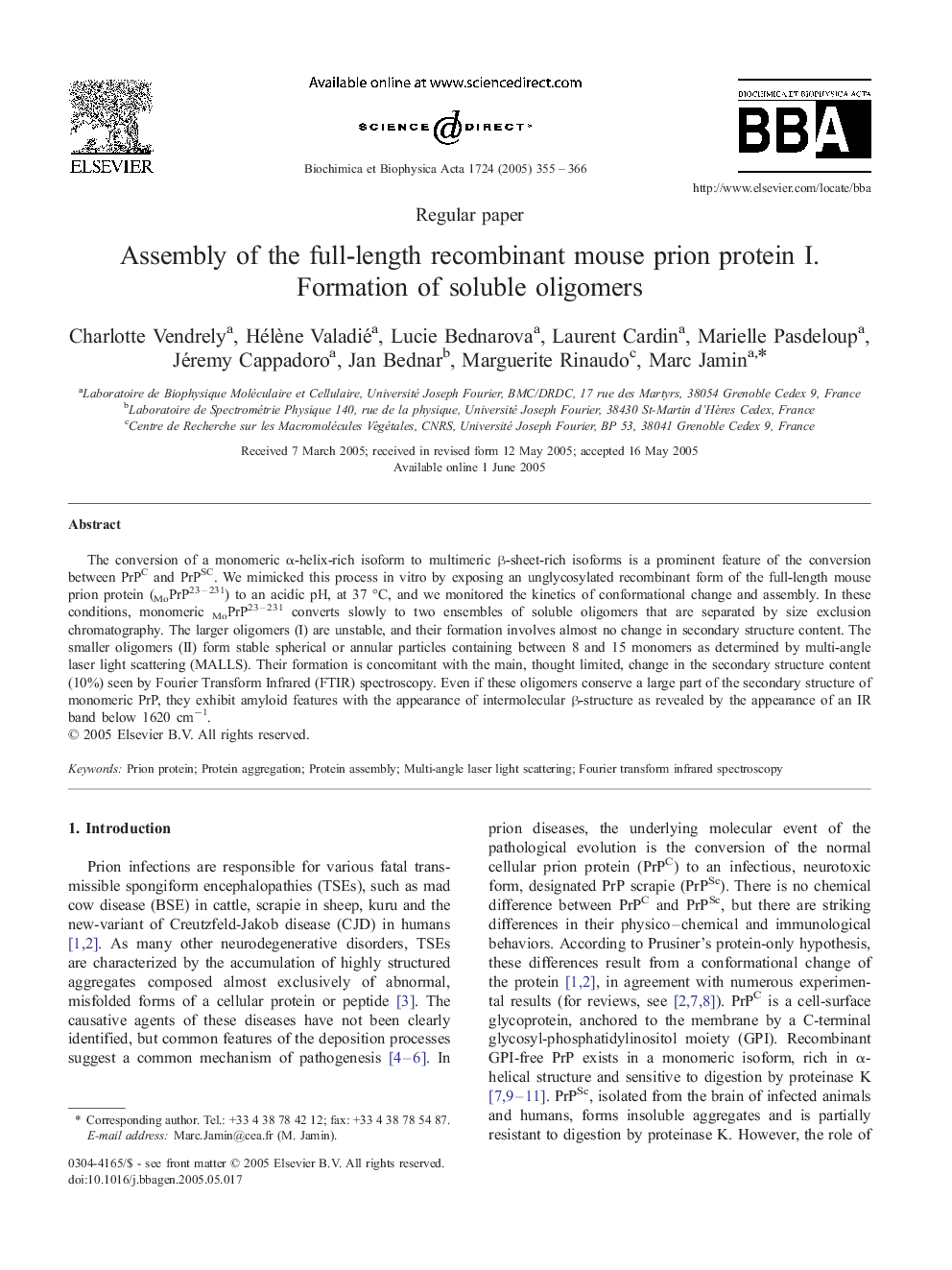| Article ID | Journal | Published Year | Pages | File Type |
|---|---|---|---|---|
| 10801078 | Biochimica et Biophysica Acta (BBA) - General Subjects | 2005 | 12 Pages |
Abstract
The conversion of a monomeric α-helix-rich isoform to multimeric β-sheet-rich isoforms is a prominent feature of the conversion between PrPC and PrPSC. We mimicked this process in vitro by exposing an unglycosylated recombinant form of the full-length mouse prion protein (MoPrP23-231) to an acidic pH, at 37 °C, and we monitored the kinetics of conformational change and assembly. In these conditions, monomeric MoPrP23-231 converts slowly to two ensembles of soluble oligomers that are separated by size exclusion chromatography. The larger oligomers (I) are unstable, and their formation involves almost no change in secondary structure content. The smaller oligomers (II) form stable spherical or annular particles containing between 8 and 15 monomers as determined by multi-angle laser light scattering (MALLS). Their formation is concomitant with the main, thought limited, change in the secondary structure content (10%) seen by Fourier Transform Infrared (FTIR) spectroscopy. Even if these oligomers conserve a large part of the secondary structure of monomeric PrP, they exhibit amyloid features with the appearance of intermolecular β-structure as revealed by the appearance of an IR band below 1620 cmâ1.
Keywords
Related Topics
Life Sciences
Biochemistry, Genetics and Molecular Biology
Biochemistry
Authors
Charlotte Vendrely, Hélène Valadié, Lucie Bednarova, Laurent Cardin, Marielle Pasdeloup, Jéremy Cappadoro, Jan Bednar, Marguerite Rinaudo, Marc Jamin,
